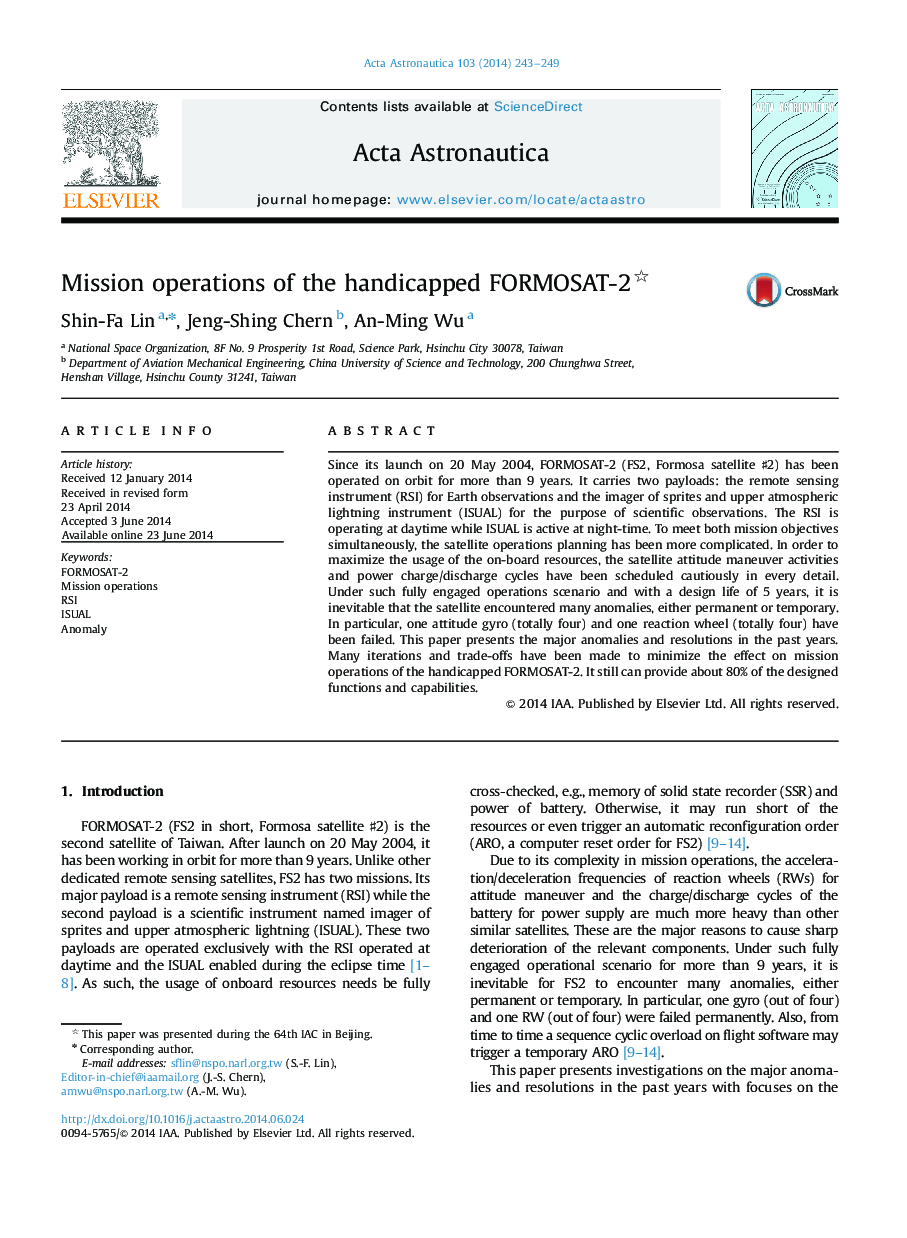| Article ID | Journal | Published Year | Pages | File Type |
|---|---|---|---|---|
| 8056835 | Acta Astronautica | 2014 | 7 Pages |
Abstract
Since its launch on 20 May 2004, FORMOSAT-2 (FS2, Formosa satellite â¯2) has been operated on orbit for more than 9 years. It carries two payloads: the remote sensing instrument (RSI) for Earth observations and the imager of sprites and upper atmospheric lightning instrument (ISUAL) for the purpose of scientific observations. The RSI is operating at daytime while ISUAL is active at night-time. To meet both mission objectives simultaneously, the satellite operations planning has been more complicated. In order to maximize the usage of the on-board resources, the satellite attitude maneuver activities and power charge/discharge cycles have been scheduled cautiously in every detail. Under such fully engaged operations scenario and with a design life of 5 years, it is inevitable that the satellite encountered many anomalies, either permanent or temporary. In particular, one attitude gyro (totally four) and one reaction wheel (totally four) have been failed. This paper presents the major anomalies and resolutions in the past years. Many iterations and trade-offs have been made to minimize the effect on mission operations of the handicapped FORMOSAT-2. It still can provide about 80% of the designed functions and capabilities.
Related Topics
Physical Sciences and Engineering
Engineering
Aerospace Engineering
Authors
Shin-Fa Lin, Jeng-Shing Chern, An-Ming Wu,
